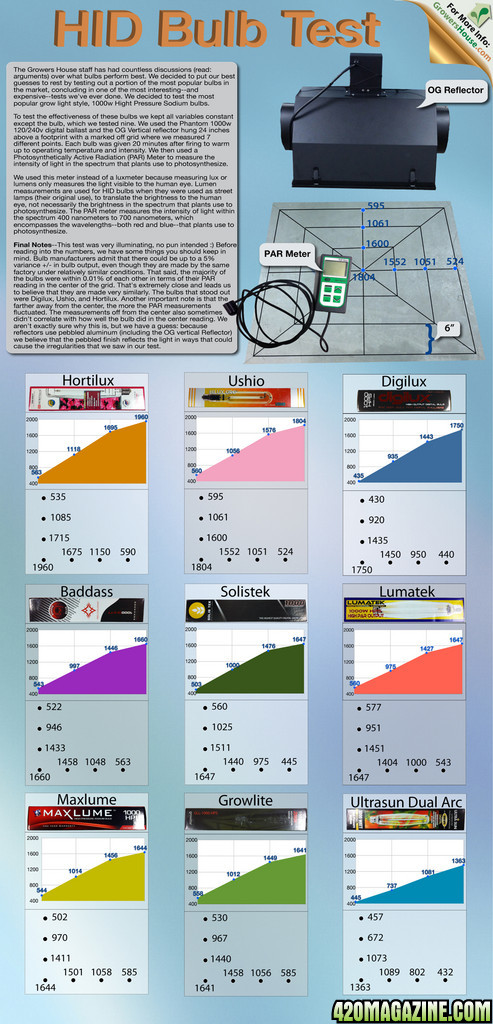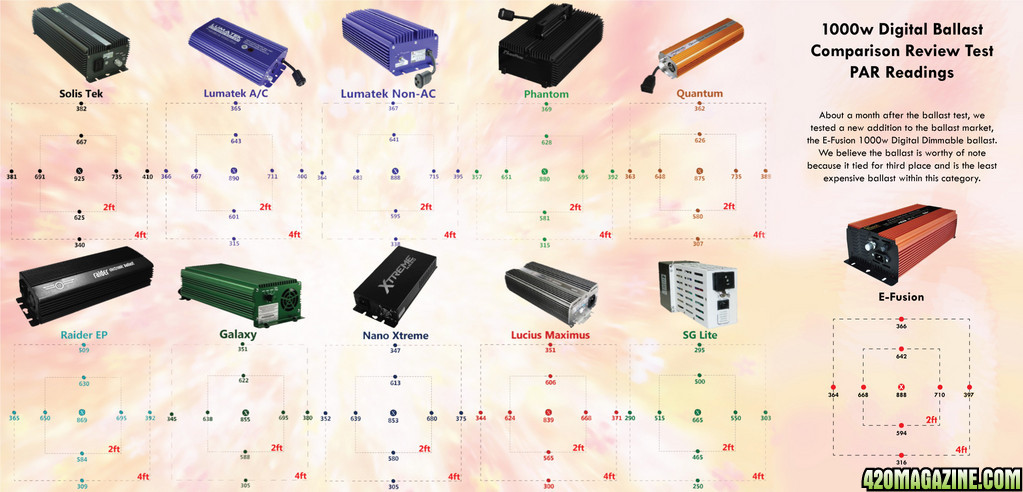think difrent
New Member
hello im looking to buy my girls a new ballast i own now a dimale 400_600w sl lumatek 2 year old and have this old one for reserve and was loking some revives wich is the best one all the older ones say lumatek all the new say solis tek and then i learnd abaut THD because solis tek constantly talkng abaut it that theire ballast have the lovest 11_14% and lumatek 255_270% haha my lumatek the label says 10%thd
then i wrote an e mail to solis tek abaut it and thay anwsered :
Most companies only measure INPUT THD, which is not as important as nearly important as OUPUT THD. OUPUT THD is the chemistry/connection between the lamp and ballast, INPUT THD is the measurement of the THD from your power source to the ballast. Our company actually measures output THD, Lumatek and many other companies display only their INPUT THD, that's why many people are fooled into believing that their ballast is low THD when it is indeed far from the truth. We own an operate our own factory unlike other ballast companies and have US engineers/technicians stationed there 24/7. In the states we are known as a top tier ballast with an lamp line up that is providing growers with the proper spectrum for their medicine. Lumatek used to be a big power house here but unfortunately but has lost traction due to their quality, customer support, and lack of innovation. Their output THD (not input) is incredibly high at 270%, this causes inconsistent lamp ignition, premature lamp failure, low performance, and reeks havoc on the ballast and lamp. Just remember there are two different types of THD when a ballast is measured, INPUT and OUTPUT. Lumatek does not even have the proper meter to measure their OUTPUT THD
i think this is bull shit how can they measure input thd what from the socket or what and if in europe it would be difrent then in usa...
is here somebody who knows more abaut that and would help a bit tnx
then i wrote an e mail to solis tek abaut it and thay anwsered :
Most companies only measure INPUT THD, which is not as important as nearly important as OUPUT THD. OUPUT THD is the chemistry/connection between the lamp and ballast, INPUT THD is the measurement of the THD from your power source to the ballast. Our company actually measures output THD, Lumatek and many other companies display only their INPUT THD, that's why many people are fooled into believing that their ballast is low THD when it is indeed far from the truth. We own an operate our own factory unlike other ballast companies and have US engineers/technicians stationed there 24/7. In the states we are known as a top tier ballast with an lamp line up that is providing growers with the proper spectrum for their medicine. Lumatek used to be a big power house here but unfortunately but has lost traction due to their quality, customer support, and lack of innovation. Their output THD (not input) is incredibly high at 270%, this causes inconsistent lamp ignition, premature lamp failure, low performance, and reeks havoc on the ballast and lamp. Just remember there are two different types of THD when a ballast is measured, INPUT and OUTPUT. Lumatek does not even have the proper meter to measure their OUTPUT THD

i think this is bull shit how can they measure input thd what from the socket or what and if in europe it would be difrent then in usa...
is here somebody who knows more abaut that and would help a bit tnx




